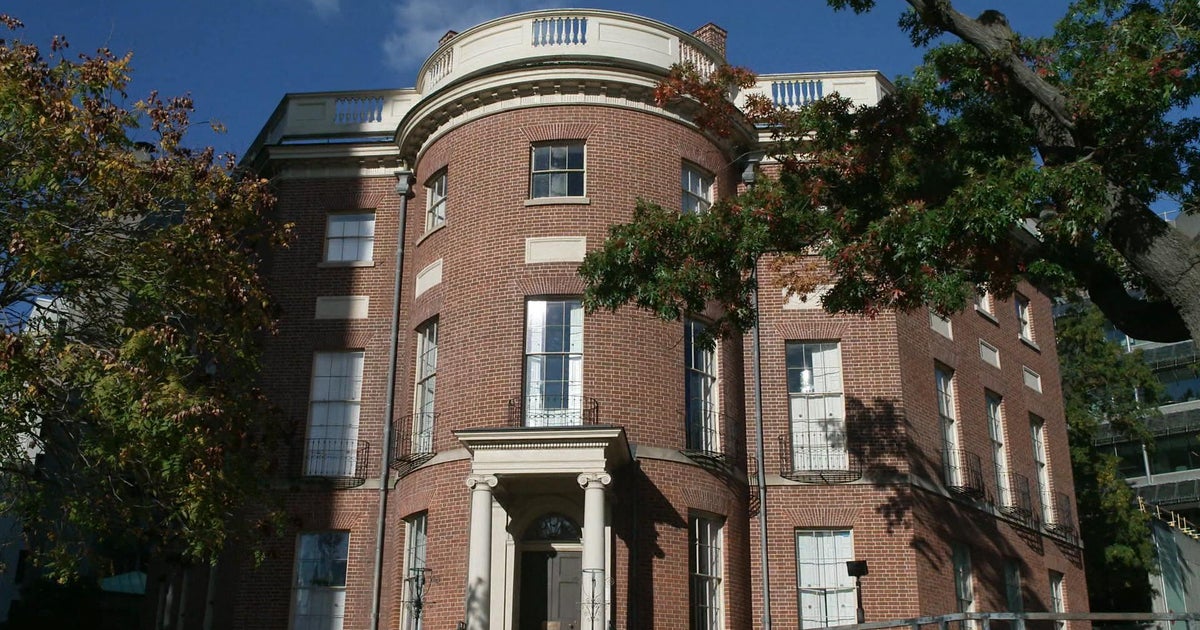A look inside The Octagon, one of Washington D.C.’s oldest – and most haunted – homes

The White House may be the most well-known home in Washington D.C., but just blocks away from the presidential mansion sits a lesser known home with its own piece of U.S. history.
The Octagon is an approximately 10,000 square foot home designed by William Thornton, who served as the first architect of the U.S. Capitol. The building sits at the corner of New York Avenue NW and 18th Street NW in Washington, D.C., and was completed in 1801.
Built as a second residence for Virginia’s prominent Tayloe family who were friends of George Washington, the more than 200-year old building gets its name from the shape of the main room at the main entrance. Amanda Ferrario is the manager of the house, which now doubles as a museum and event space. It’s owned and maintained by the Architects Foundation, the philanthropic partner of the American Institute of Architects (AIA), which purchased the property in 1902.
“The Octagon name comes from this room that we’re standing in,” Ferrario told CBS News during a tour of the home. “In order to build a circular room, you make the structure out of an octagonal shape and then builds it in with various building materials to give this nice smooth circle,” she added.
Ferrario says the epicenter of the house was in the basement, where several enslaved people lived and worked mostly out of sight of the wealthy occupants.
“(The basement) is the absolute epicenter of all of the activity,” Ferrario said. “Not only for the enslaved who would live and work here, they were sleeping here. They were working here around the clock, but also in order to operate a house of this caliber,” she added.
The Octagon also served as a home for one of America’s early first families. President James Madison and his wife, Dolley Madison, temporarily relocated to the home after the British burned down the White House in 1814. Ferrario says the rent for the temporary stay was about $6,000 for their 6-month stay. She also noted the specific reason why the British did not destroy the prominent home.
“But during this time, Mr. Tayloe was quite savvy, and invited a French ambassador to stay here. He knew that if there was a French flag flying, no one’s going to touch this house,” Ferrario said. “And it was spared, and rightfully so, because in preparation for the British coming. And Dolley Madison did send over a few of her items that meant a lot to her, so that they would be extra protected.”
President Madison used the residence to conduct official business including signing the Treaty of Ghent which ended the War of 1812. He signed the document in the home’s circular office, Ferrario told CBS News.
Dolley Madison brought cherished items from the White House including curtains, silverware and her pet bird. The former first lady would go on to host what became known as “squeezes” in the first floor sitting room. The events were gatherings of Washington’s elite at the time.
Over the years, The Octagon was transformed for different uses including a Catholic school for girls, a federal office building and later as tenement housing.
Its storied past includes spooky and unexplained events reported by guests throughout the building’s lifetime. Doors opening, lights flickering and security alarms going off without any explanation have been common occurrences in the building.
“We have an ongoing, I guess it’s kind of an ongoing joke with our security monitoring company, that if the security monitors go off on the second or third floor, everything is okay. It’s just our friends playing.”
Ferrario also says Jackie Kennedy Onassis — then known as Jackie Bouvier — may have had her own chilling experience in the home when she was working for a local newspaper.
“She wrote about a time when she came through to the Octagon and she was standing right where you’re standing,” Ferrario explained to CBS News. “And she felt the overwhelming presence and a smell of lilac, which is equated to Dolley (Madison). And what she said was, it was like a former first lady looking over the shoulder of a future first lady.”
The building is currently undergoing renovations to become a prominent and cohesive part of the new headquarters for the AIA later this year. The house will also play a part in America’s 250th Independence celebration after receiving a National Park Service grant for restoration efforts.
Jennifer Calvert Hall serves as the Executive Director of the Architects Foundation. She hopes future visitors gain a sense of reverence for the architecture of America’s early history.
“I want them to have this sense of that moment in time where our founding, sort of the people who founded the United States of America, were interested in very progressive ideas, and that those progressive ideas were reflected in its architecture. I want them to feel that,” Calvert Hall said.




